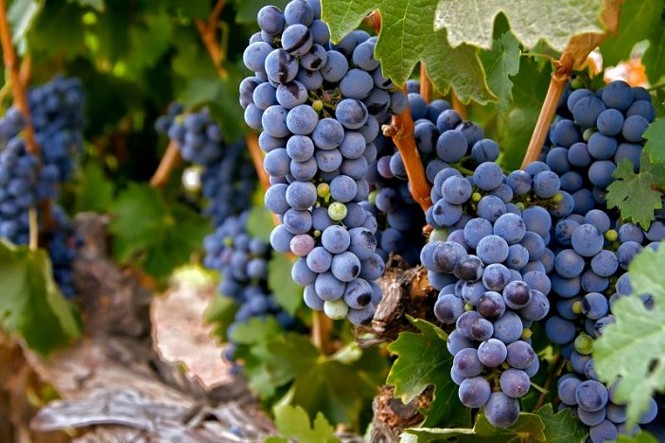Support the Free Press | Facts matter. Truth matters. Journalism matters
Salt Lake City Weekly has been Utah's source of independent news and in-depth journalism since 1984. Donate today to ensure the legacy continues.
Wednesday, March 23, 2016
Wine Wednesday: American Zin for Easter
Posted By Ted Scheffler on March 23, 2016, 8:30 AM
Having lived and grown up in countries all over the world, I am not especially nationalistic. Jingoism makes my blood boil. Still, I am proud of American jazz, blues, rock and roll, baseball and … Zinfandel. Why
And yet, “Zinfandel” sure doesn’t sound American. Indeed, the name Zinfandel is thought to be of European origin, possibly linked to the “Black Zinfardel of Hungary” mentioned in A Treatise on the Vine by William Robert Prince in 1830. Others think it’s a modification of Tzinifánfli or Czirifandli, Hungarian terms that in term derive from the German Zierfandler (a white grape).
It’s much too dense and complex to go into here – thousands of pages of research have been written – but anyone really interested in the obscure origins of what is called Zinfandel in this country might want to wade into the debates and DNA fingerprinting of Italian and Croatian Primitivo and Tribidrag grapes, versus Zinfandel. Although the matter still hasn’t been settled to everyone’s satisfaction, Zinfandel is thought by some researchers to have genetically descended from Croatian grape varietals.
Whatever its etymology, Zinfandel in America dates back to the 1820s, when it was planted on Long Island. By 1835, Zinfandel was being used in the Boston area – cultivated as a hothouse varietal - as a table grape. It is first documented as a grape used for making wine in 1847, in John Fisk Allen’s Practical Treatise in the Culture and Treatment of the Grape Vine. But,it would soon be supplanted in the Northeast by the heartier Concord grape, which could be grown outdoors.
In the 1850s, Zinfandel makes its first appearance in California, albeit as a table grape that came west with the Gold Rush. It’s thought that Joseph Osborne might have made the first California Zinfandel wine after he planted Zinfandel at his Oak Knoll Vineyard in the North Napa region. A Zin boom followed, and by the end of the 1800s, Zinfandel was the most common wine grape variety planted in California.
Today, Zinfandel tends to be made most often in a big, robust, high-alcohol style. Blackberry,
On Topic...
-
Film Reviews: New Releases for April 12
Civil War, Escape from Germany, Coup de Chance, Hundreds of Beavers, La Chimera, Sting
- Apr 11, 2024
-
Film Reviews: New Releases for April 5
Monkey Man, The First Omen, Wicked Little Letters, Girls State, Scoop, Exhuma
- Apr 4, 2024
-
Music Plus: March 29
Das Energi Festival headliners, Ogden Twilight lineup
- Mar 29, 2024
- More Culture » More Food & Drink »
More by Ted Scheffler
-
Flavor on the Western Front
Nomad Eatery ups the ante for off-airport eats.
- Dec 13, 2017
-
Under the Christmas Tree
Holiday gifts for cooks, foodies and winos
- Dec 6, 2017
-
Spreading the Love
Amour Café creates simple yet scrumptious fare.
- Nov 29, 2017
- More »






